
Andrew Adair, John Bedding, Sarah Dunstan, Elly Wall & David Wright Surface Levels
This show features five ceramicists from different parts of the UK who all have a close affinity with fired clay and a common concern with its surface. From the patterned surfaces of St. Ives potters John Bedding and Sarah Dunstan to the layered and distressed pots of Dumfries- based Andrew Adair; the heavily patinated architectural vessels of Hertford’s Elly Wall to the richly coloured and playful ceramics by the Redditch potter David Wright.
Andrew Adair
Andrew has been a practicing ceramic artist for over thirty years and has always tried to maintain a playful approach to his work, allowing the clay to be evident through torn edges, cracks, texture and surface, enjoying the random, organic quality this brings. He feels a great affinity with clay and the integrity of the material itself must be clearly manifest in the finished form, and although his work is non-functional, he enjoys “the potness of the pot”; something to be handled and appreciated in a tactile sense and not just by the eye. he still maintains many of the same themes that fascinated him at Art School, the layering and distressing of surface, the unpredictable and the accidental and always a spontaneous reaction to where this playfulness leads. A make it up as you go along philosophy is pretty much a constant in his process, and this latest work, which he only started in September, is very much of that ethos. Although still in its infancy, he is very excited by the possibilities of this newest work.
John Bedding
John began potting at seventeen in a small commercial South London pottery. He was drawn to pottery by its unique mixture of art, craft and chemistry. The balance of routine, experiment and discovery seemed to suit his character and skills. . .
He moved to St. Ives in the late 1960’s and worked with Bernard Leach, first as an apprentice and later as a member of staff. In 1978 urged by Janet and Bernard Leach John went to Japan, as only the second potter to be sent to Japan by the Leach Pottery. He worked with Shigeyoshi Ichino; whom he had become friends with at the Leach. This was at his family pottery in the ancient pottery district of Tamba, the year culminated in a solo show in the prestigious Hankyu Department Store. John returned to England in 1980 and set up his own workshop, firstly in Penzance, and later Trencrom, on the outskirts of St Ives. At Trencrom he moved away from the more traditional Stoneware and Porcelain to explore low fired fuming and raku techniques in a search for a more individual style.
In 1990 he moved back into St. Ives and established St Ives Pottery which was later called St Ives Ceramics. This was fronted by a gallery in which showed John’s own work and pots by other potters that he admired. With the arrival of the Tate Gallery in St. Ives Bedding was chosen as the second guest potter to exhibit in their yearly exhibition
In 1999 he opened the Gaolyard Studios, a group of nine self-contained pottery studios built on the site of the old town gaol. This was an effort to regain a new momentum to the pottery making in St Ives and to once again work within a group. It also allowed him to expand the St Ives Ceramics galley and exhibit a wider range of pots, including works from 20th century master potters collected in partnership with Kate Chertavain known as the CBS collection.
Sarah Dunstan
Sarah knew from the very start of her ceramics career that her studio would be in St Ives. She loves the creative mix of artists, potters and writers that continues to thrive in the town – especially since the re-opening of the Leach Pottery.
In her work she explores ideas around the half-forgotten memories and images that persist from childhood – perhaps a vintage wallpaper, the stylised narrative of her Mother’s Willow Pattern plates, or the familiar shape of an opened sardine tin. Her aim is to bring these elements together in a finished piece to combine a gentle nostalgia with the absolute, archival permanence of the ceramic medium.
Elly Wall
Elly Wall’s interest in ceramics began when she took an evening class in pottery aged 17. She then went on to gain a degree in Ceramics and 3D design at Bath Spa University, and after that a Master’s degree in Ceramics at the Royal College of Art, graduating in 2004
Her work is hand built using slabs of clay with slips and textural marks and impressions applied during the making process. She works in a variety of stoneware clays, and is interested in how these clays transfer their unique qualities and characteristics to the work, allowing her to create groups and families of vessels, building a narrative between themselves.
While the work has evolved to be influenced by the material itself, in the background is a continuing fascination with empty and abandoned public buildings and structures. The physical and historical layers of these spaces become fascinating empty vessels. She is interested in exploring this idea, looking at the expectations and boundaries of function and aesthetics.
David Wright
David’s involvement with ceramics and studio pottery goes back some 35 years, when an interest in clay was piqued by two inspirational tutors, David Morris and David Paton at the Grimsby School of Art, during an Art Foundation course. He went on to study ceramics at Wolverhampton Polytechnic gaining a first-class honours degree in 1989 and, subsequently, studied Ceramics and Glass at post graduate level, gaining a Master’s degree from the Royal College of Art in 1992. During this latter period, he had the opportunity to complete a placement at Wedgwood in Barlaston, Stoke-on-Trent designing and modelling prototype prestige giftware. He has recently retired from 27 years in secondary education as a teacher and faculty head and he says that now is the time to resolve some unfinished business with clay…
“I am of the view my ceramic pieces and the way in which I work is strongly influenced by belonging to a generation that made things as children. I tend to work very much in the style of somebody who might be constructing a model kit i.e. parts that are glued together to make a whole. The scale of my work tends to reflect this too, I am happiest producing pieces that are relatively small and of the size of the model aeroplanes that used to hang from my bedroom ceiling.
Currently, I am interested in how a fairly limited range of shapes can be combined in a number of different formats to create variations in overall form. My approach to ceramic processes is akin to the analogy of a kid in a sweet shop, I want to try as many methods as possible and produce work using earthenware, stoneware, Raku and other alternative firing techniques.”
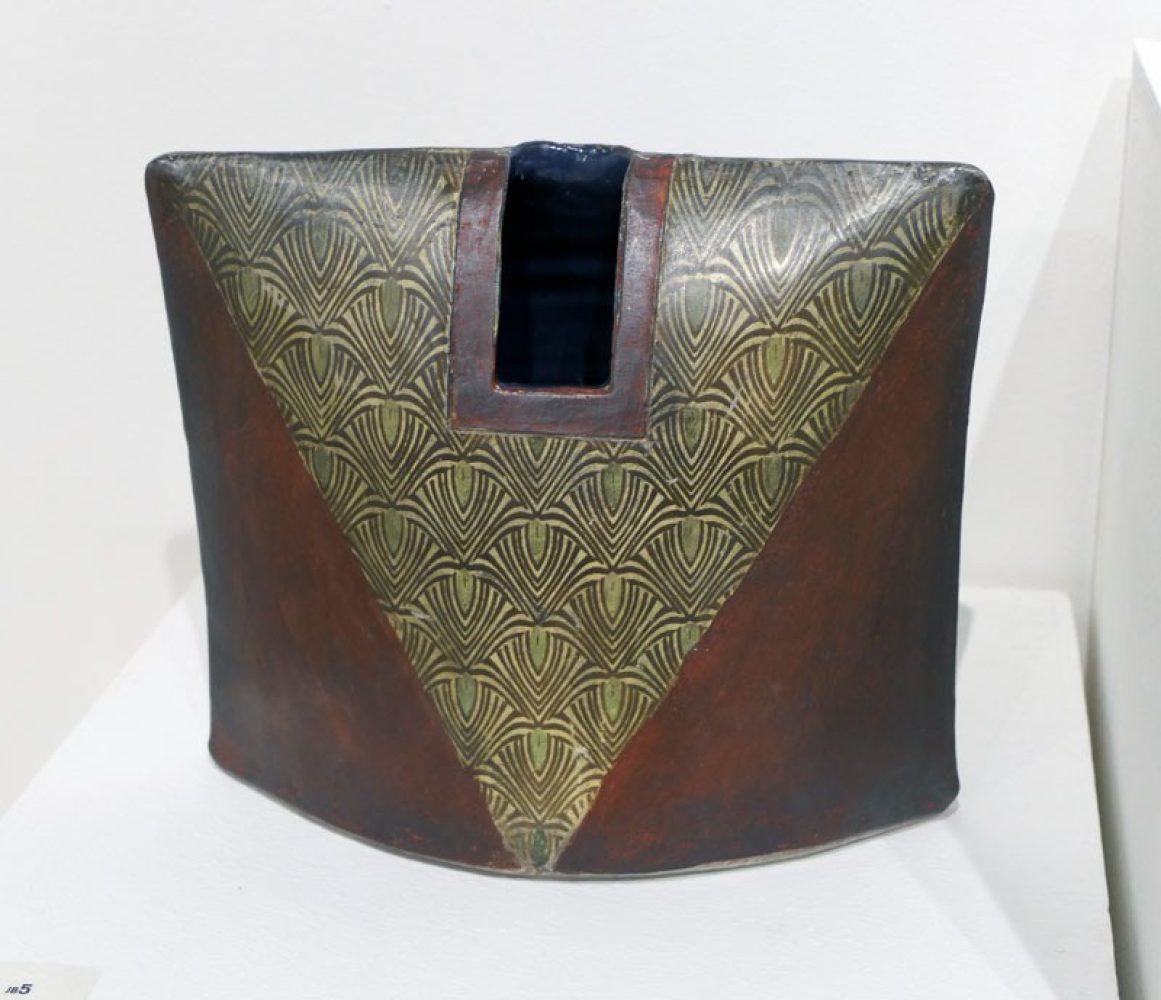
John Bedding
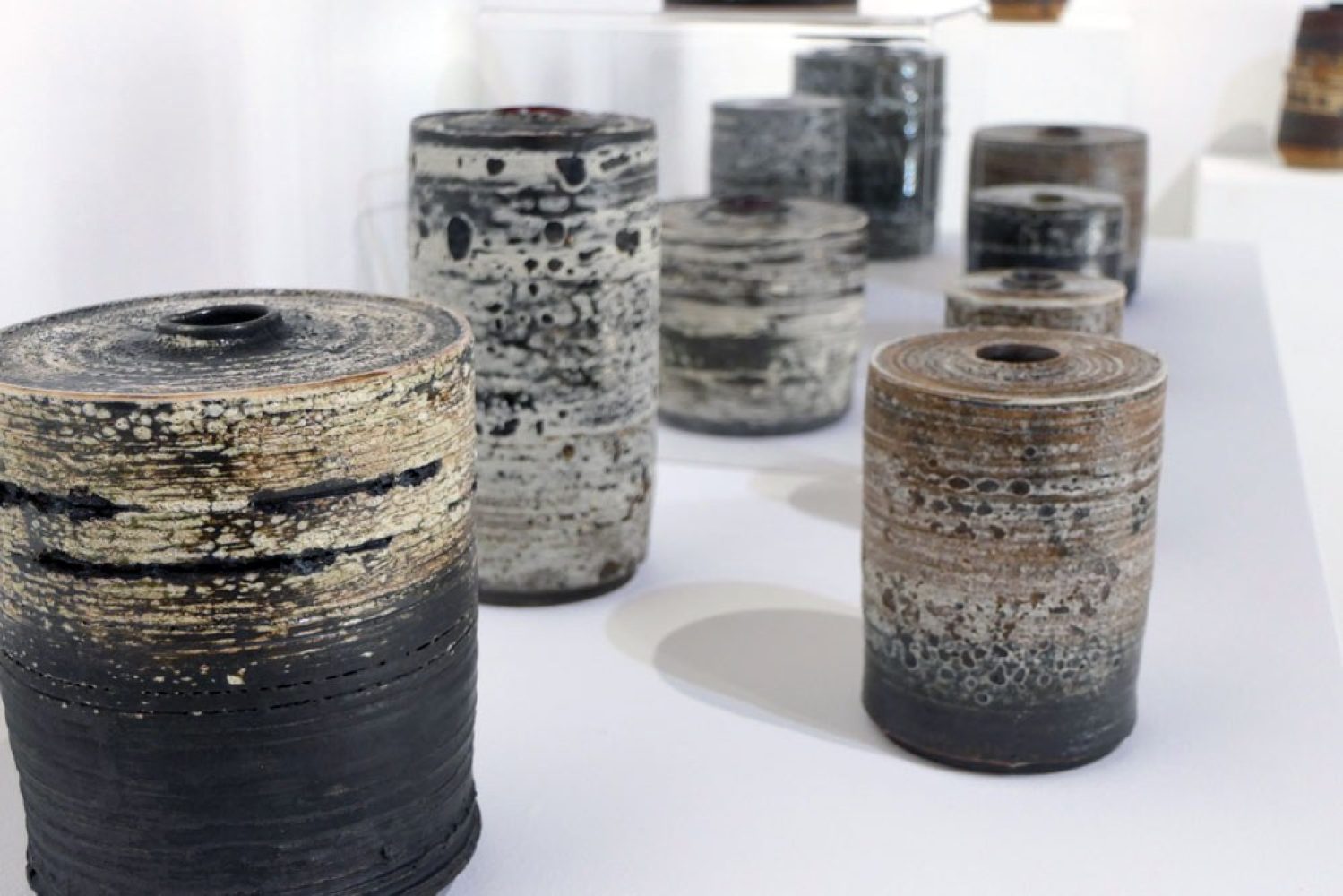
Andrew Adair
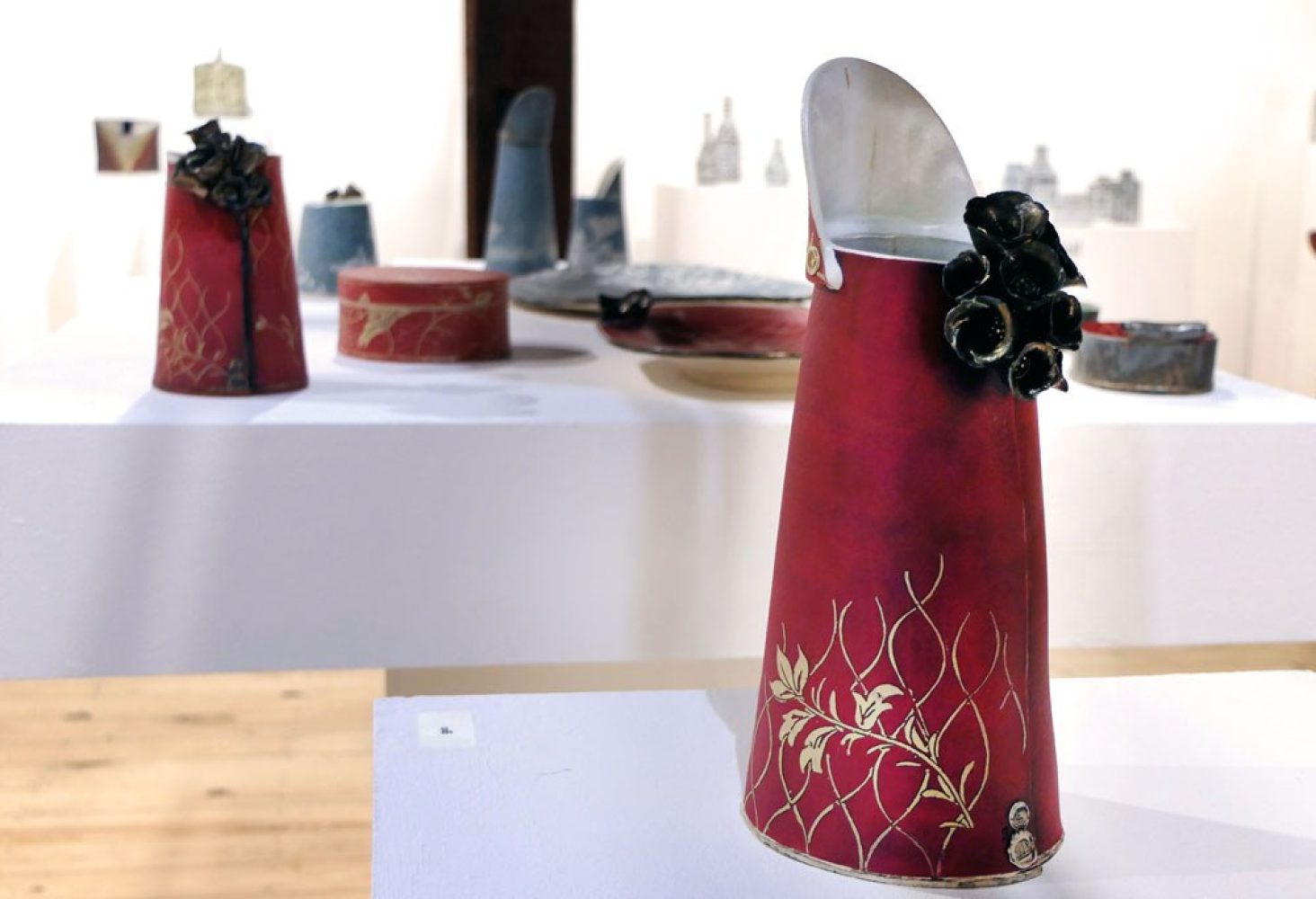
Sarah Dunstan
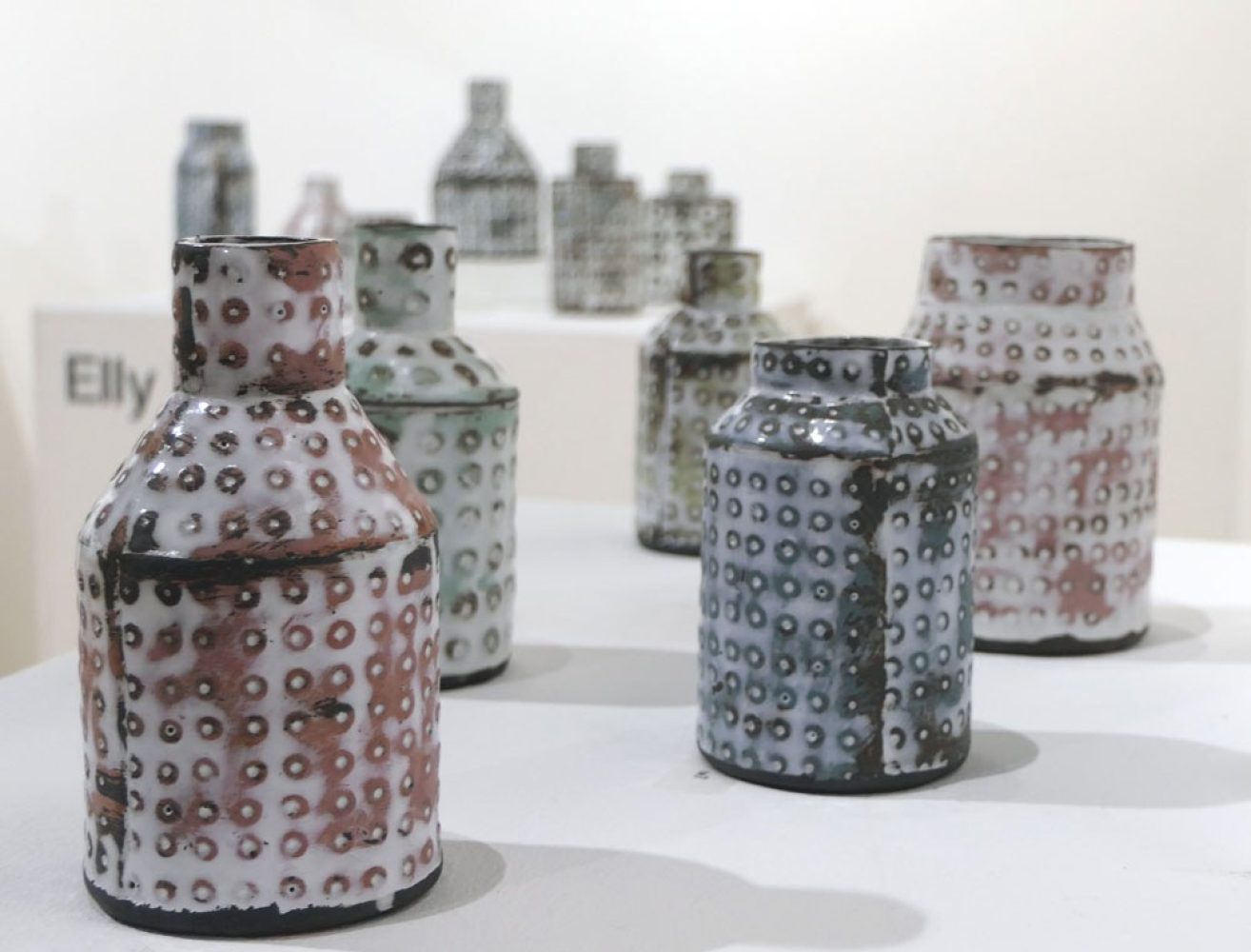
Elly Wall
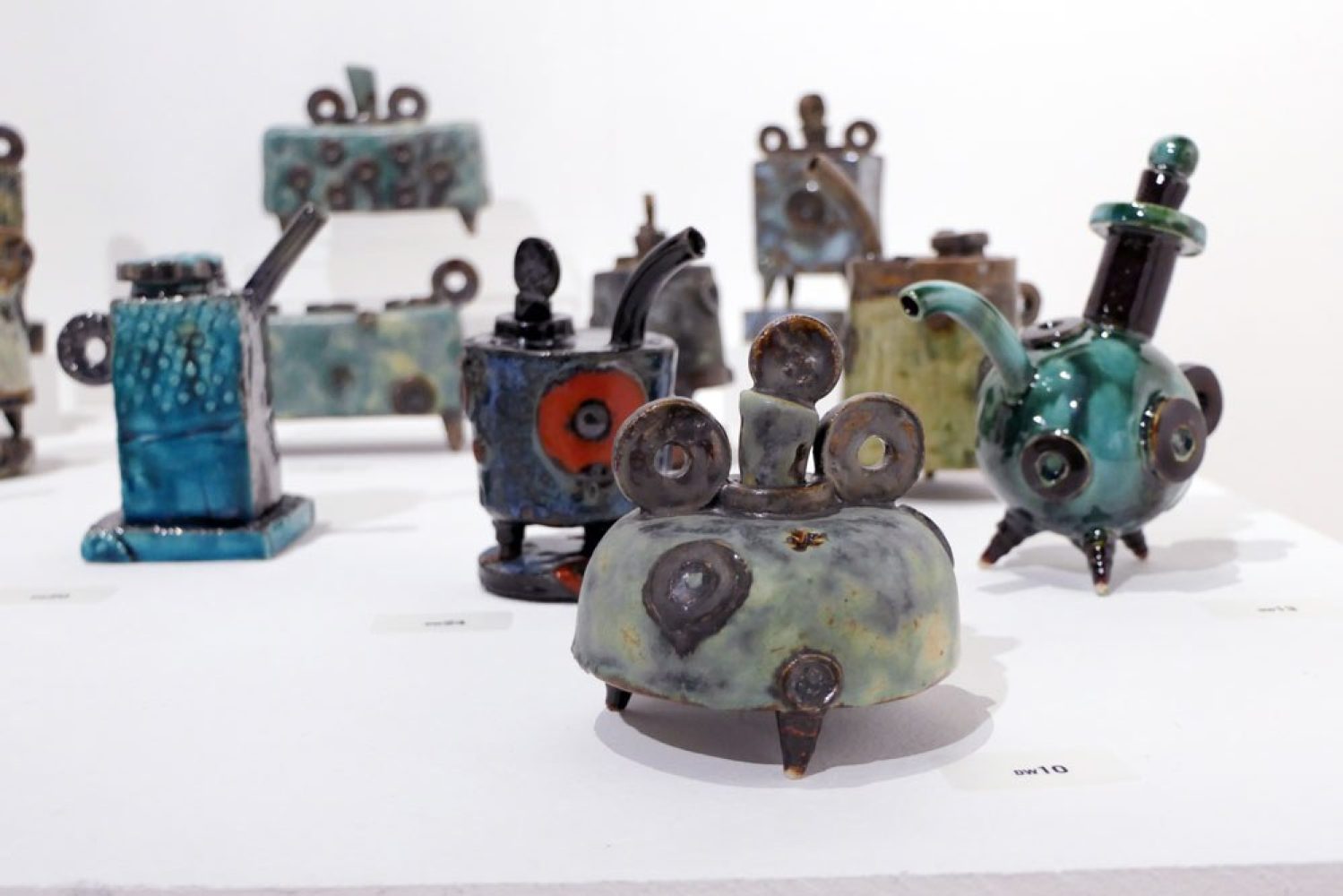
David Wright
Gallery One
This exhibition has finished




